The Prince of Egypt stands as a monumental achievement in animated cinema, not only for its compelling narrative and stunning visuals but also for its breathtaking musical score. While often compared to Disney’s animated musicals, The Prince of Egypt carves its own unique path, offering a richer, more emotionally resonant soundtrack that delves into themes of faith, freedom, and identity. This article will journey through the iconic songs of this Dreamworks masterpiece, exploring their narrative significance, musical brilliance, and enduring appeal. We’ll analyze each track from the powerful opening to the uplifting finale, revealing why the music of The Prince of Egypt continues to captivate audiences worldwide.
Deliver Us/River Lullaby
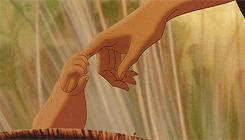 Scene from The Prince of Egypt movie featuring the River Lullaby song, depicting Moses' mother placing him in a basket in the Nile River.
Scene from The Prince of Egypt movie featuring the River Lullaby song, depicting Moses' mother placing him in a basket in the Nile River.
Often considered as two parts of a single, potent opening sequence, “Deliver Us” and “River Lullaby” together form one of the most impactful movie introductions ever created. “Deliver Us” immediately immerses the viewer in the Hebrews’ desperate plight under Egyptian slavery. It’s a raw and visceral “I Want” song, expressing the collective yearning for divine intervention and liberation. The lyrics are a heartfelt cry to “Elohim, God on high,” pleading for deliverance from oppression and a journey to the promised land.
Elohim, God on high,
Can you hear your people cry?
Help us now, this dark hour
Deliver us, hear our call
Deliver us, Lord of all
Remember us, here in this burning sand
Deliver us
There’s a land you promised us
Deliver us to the promised land
The transition to the “River Lullaby” reveals a deeply personal dimension to the plea for deliverance. It shifts from the collective suffering of the Hebrews to the intimate sacrifice of Moses’ mother. Her lullaby becomes a dual plea: for her son’s survival and for the ultimate freedom of her people. She is forced to entrust her infant son to the mercy of the Nile, hoping he will be spared from the decree to drown Hebrew newborns. This act of immense courage and faith is captured in the poignant lyrics:
My son, I have nothing I can give
But this chance that you may live
I pray, we’ll meet again
If He will deliver us
The scene depicting Moses’ mother and sisters evading Egyptian soldiers to reach the riverbank powerfully underscores her bravery and determination. Her trust in the river’s currents and divine providence to safeguard her son is a testament to her strength. Young Miriam’s whispered prayer as the basket floats away adds another layer of emotional depth, foreshadowing her later role in Moses’ life and the future deliverance of their people:
Grow, baby brother
Come back someday
Come and deliver us, too
The later callback to the “River Lullaby” when Moses encounters Miriam as an adult is a powerful and haunting moment. Miriam’s familiar melody acts as a catalyst, stirring buried memories within Moses and unsettling his carefully constructed identity. The echo of the lullaby, both musically and visually, creates a profound connection between past and present, revealing the enduring impact of his origins.
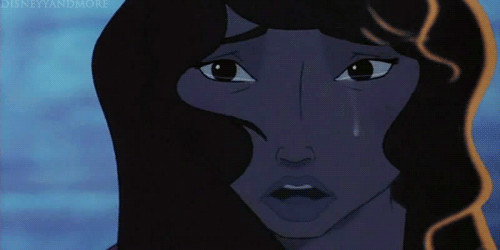 Scene from The Prince of Egypt movie showcasing Miriam singing a familiar lullaby to Moses, highlighting their shared past.
Scene from The Prince of Egypt movie showcasing Miriam singing a familiar lullaby to Moses, highlighting their shared past.
Adding to the authenticity and emotional resonance of “River Lullaby” is the inclusion of Hebrew lyrics. Moses’ mother sings to him in Hebrew, a small detail that speaks volumes about the film’s dedication to research and cultural sensitivity. The Hebrew words,
Yaldi hatov veh harach (My good and tender son)
Al tira veh al tifchad (Don’t be frightened and don’t be scared)
further enrich the scene, adding a layer of intimacy and cultural grounding that sets The Prince of Egypt apart.
All I Ever Wanted
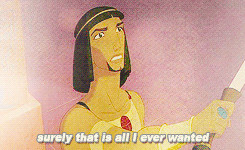 Moses in The Prince of Egypt, depicted in a GIF, singing the song All I Ever Wanted, expressing his internal conflict and denial about his identity.
Moses in The Prince of Egypt, depicted in a GIF, singing the song All I Ever Wanted, expressing his internal conflict and denial about his identity.
 Another scene from The Prince of Egypt, a GIF showing Moses during All I Ever Wanted, highlighting his changing emotions from confidence to doubt and confusion.
Another scene from The Prince of Egypt, a GIF showing Moses during All I Ever Wanted, highlighting his changing emotions from confidence to doubt and confusion.
“All I Ever Wanted” presents a compelling deconstruction of the typical Disney “I Want” song trope. Instead of outward aspiration, it delves into Moses’ internal struggle with his identity after discovering his Hebrew heritage. This song is not sung aloud by Moses in the film but rather plays as an internal monologue, reflecting his denial and cognitive dissonance. He clings to the familiar comforts of his Egyptian life – “sweet perfumes of incense, graceful rooms of alabaster stone” – attempting to suppress the unsettling truth revealed by Miriam.
Moses’ lyrics reveal his desperate attempt to reaffirm his belonging within the Egyptian royal family. He repeats the phrase “if anybody doubts it, they couldn’t be more wrong,” even as his own doubts become increasingly palpable. The internal nature of the song enhances the sense of his isolation and internal conflict. He is caught between the life he has always known and the unsettling reality of his origins.
The repetition of “all I ever wanted” becomes increasingly hollow, mirroring Moses’ growing disillusionment. As he leans against the statue, the realization dawns on him that his past desires are no longer sufficient. His world has been irrevocably altered, and the life he once cherished now feels like a gilded cage.
All I Ever Wanted (The Queen’s Reprise)
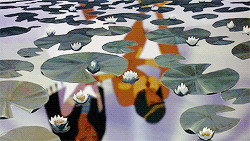 Scene from The Prince of Egypt featuring the Queen singing All I Ever Wanted (The Queen's Reprise) to Moses, trying to comfort him and reinforce his Egyptian identity.
Scene from The Prince of Egypt featuring the Queen singing All I Ever Wanted (The Queen's Reprise) to Moses, trying to comfort him and reinforce his Egyptian identity.
The Prince of Egypt innovatively reinterprets the reprise by assigning “All I Ever Wanted” to the Queen, Moses’ adoptive mother. This shift in perspective provides insight into her motivations and her attempts to maintain the status quo. While Moses grapples with his identity crisis, the Queen seeks to reassure him and reinforce his Egyptian identity. Her words, at first glance, seem comforting:
Here the river brought you
And it’s here the river meant
To be your home
She frames his arrival in Egypt as destiny, an act of fate orchestrated by the river itself. However, a closer look reveals a more manipulative undertone. The subsequent stanza reveals a chilling undercurrent of denial and control:
Now you know the truth, love
Now forget and be content
When the gods send you a blessing
You don’t ask why it was sent…
The Queen’s “reassurance” becomes a veiled command to suppress the truth and embrace ignorance. Her line, “You don’t ask why it was sent,” is particularly disturbing, considering her firsthand knowledge of the horrific circumstances surrounding Moses’ arrival – the genocide of Hebrew infants ordered by her own husband. She advocates for willful blindness, urging Moses to ignore the moral implications of his privileged position. While seemingly offering solace, her words are ultimately a form of emotional manipulation, seeking to maintain her control and the established order. However, Moses remains unplacated, recognizing the superficiality of her comfort.
Through Heaven’s Eyes
 Scene from The Prince of Egypt movie featuring Moses and Jethro during the Through Heaven's Eyes song, depicting Moses' transformation and finding purpose.
Scene from The Prince of Egypt movie featuring Moses and Jethro during the Through Heaven's Eyes song, depicting Moses' transformation and finding purpose.
“Through Heaven’s Eyes” is a pivotal song in Moses’ journey, marking his transformation from a prince grappling with identity to a man embracing purpose and compassion. This uplifting and inspiring song emphasizes self-worth, perspective, and finding meaning beyond material possessions. After hitting rock bottom, stripped of his royal status and grappling with his past, Moses finds guidance and a renewed sense of self-value through Jethro’s wisdom and the Midianite community.
The opening stanza beautifully illustrates the theme of interconnectedness and individual purpose within a larger design:
A single thread in a tapestry,
Though its color brightly shines,
Can never see its purpose
In the pattern of the grand design
This metaphor highlights Moses’ struggle to understand his place in the world. Isolated in his royal privilege, he could not perceive his true purpose. It is within the community of Midian, among ordinary people, that he begins to grasp his value and potential. The montage accompanying the song showcases Moses integrating into Midianite life, learning new skills, and, crucially, falling in love with Tzipporah. This romantic development is intertwined with his self-discovery; as Moses embraces his true self, Tzipporah’s affection deepens.
The lyrics directly address Moses’ past struggles with worth and identity:
So how do you measure the worth of a man, in wealth or strength or size?
In how much he gained, or how much he gave?
Moses’ journey is about redefining his self-worth beyond his former princely status. He learns that true value lies not in material possessions or social standing but in contribution and compassion. By viewing his life “through Heaven’s eyes,” he adopts a more profound and meaningful perspective, recognizing the importance of empathy and service to others.
The metaphor of “the dance” further emphasizes embracing life’s uncertainties and finding joy amidst change:
No life can escape being blown about
By the winds of change and chance
And though you never know all the steps,
You must learn to join the dance
Initially hesitant to participate in the Midianite dance, Moses gradually overcomes his resistance, symbolizing his willingness to embrace life’s uncertainties and find his place within the community. Tzipporah pulling him into the dance signifies his acceptance of this new path and his readiness to embrace his destiny. “Through Heaven’s Eyes” marks a turning point for Moses, setting him on the path towards his ultimate calling.
Playing with the Big Boys
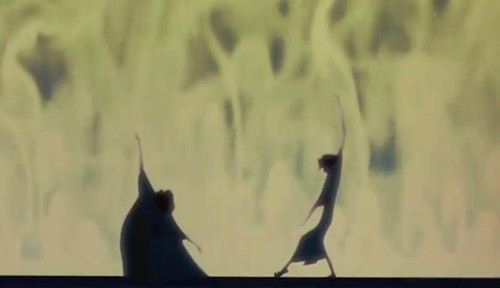 Animated GIF from The Prince of Egypt, showing Hotep and Huy, the Egyptian priests, during their song Playing with the Big Boys, emphasizing their arrogance and illusionary magic.
Animated GIF from The Prince of Egypt, showing Hotep and Huy, the Egyptian priests, during their song Playing with the Big Boys, emphasizing their arrogance and illusionary magic.
“Playing with the Big Boys” serves as the quintessential “villain song” of The Prince of Egypt, though its focus is less on outright villainy and more on the contrast between illusion and true power. Sung by the Egyptian high priests Hotep and Huy, the song highlights their arrogance, reliance on trickery, and ultimate impotence in the face of divine power.
Hotep and Huy’s condescending tone is evident from the start, as they patronize Moses, calling him “boy” and dismissing his faith as a “silly twig.” They boast of their magical prowess, attempting to intimidate Moses into submission through illusions and theatrical displays:
Stop this foolish mission
Watch a true magician
Give an exhibition how
However, the film subtly reveals the deceptive nature of their “magic.” Their tricks are consistently shrouded in darkness, smoke, or misdirection – classic stage magician techniques. There is no genuine evidence of supernatural ability, only elaborate illusions designed to impress and control.
In contrast, Moses’ demonstration of divine power – turning his staff into a serpent – is performed openly, without deception. Yet, Hotep and Huy dismiss it, blinded by their own arrogance and reliance on showmanship. They attempt to mimic Moses’ feat, “conjuring” their own snakes amidst darkness and theatrics.
The ultimate humiliation for Hotep and Huy comes when Moses’ serpent devours their illusions, a symbolic representation of true divine power overcoming human trickery. Engrossed in their performance, they fail to even notice their defeat. While Hotep and Huy prioritize spectacle and illusion, Moses embodies authentic power rooted in faith. Their song underscores the superficiality of earthly power compared to the overwhelming force of the divine, setting the stage for the devastating plagues to come.
The Plagues
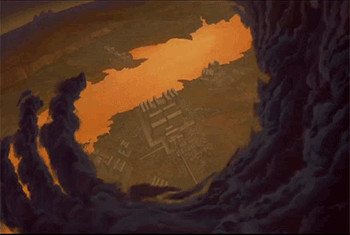 Animated GIF from The Prince of Egypt, depicting swirling dark clouds during The Plagues song, symbolizing the onset of divine wrath.
Animated GIF from The Prince of Egypt, depicting swirling dark clouds during The Plagues song, symbolizing the onset of divine wrath.
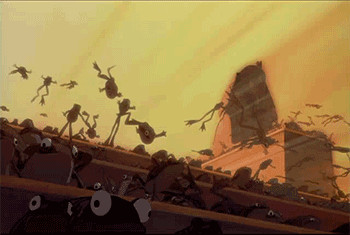 Animated GIF from The Prince of Egypt, showing frogs invading Egypt during The Plagues song, illustrating the chaos and devastation.
Animated GIF from The Prince of Egypt, showing frogs invading Egypt during The Plagues song, illustrating the chaos and devastation.
“The Plagues” is arguably the most dramatic and chilling song in The Prince of Egypt. It vividly portrays the escalating conflict between Moses and Ramses and the devastating consequences of Ramses’ stubborn refusal to release the Hebrews. The song does not shy away from the graphic depictions of suffering on both sides, emphasizing the tragic human cost of this divine conflict. Visually, the sequence is a descent into chaos: swarms of frogs, infestations of pests, fiery hail, and the river turning to blood. The lyrics are equally stark and relentless, conveying the unwavering force of divine judgment:
I send a pestilence and plague
Into your house, into your bed
Into your streams, into your streets
Into your drink, into your bread
Upon your cattle, on your sheep
Upon your oxen in your field
Into your dreams, into your sleep
Until you break, until you yield
The plagues escalate in severity, from environmental disruptions to widespread disease and destruction, culminating in the ultimate plague – the death of the firstborn. The phrase “until you break, until you yield” underscores the song’s central purpose: to break Ramses’ will and force him to concede. However, Ramses’ pride and obstinacy prolong the suffering and intensify the devastation.
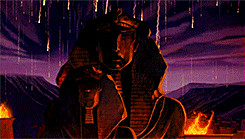 Animated GIF from The Prince of Egypt, portraying the devastation of The Plagues with fire and destruction, highlighting the severity of God's wrath.
Animated GIF from The Prince of Egypt, portraying the devastation of The Plagues with fire and destruction, highlighting the severity of God's wrath.
“The Plagues” also reveals Moses’ internal turmoil. He is torn between his loyalty to his people and his lingering affection for Ramses and Egypt, the land he once called home. A poignant echo of “All I Ever Wanted” emerges as Moses reflects on his past desires:
Once I thought the chance
To make you laugh
Was all I ever wanted
This subtle callback emphasizes the tragic irony of his situation. He is now forced to be Ramses’ adversary, a role he never desired. Moses’ anguish is palpable as he recognizes the immense suffering inflicted upon both Egyptians and Hebrews. His pleas to Ramses transform into demands, reflecting his growing frustration and righteous anger at Ramses’ intransigence.
Ramses’ response in the song reveals his self-centeredness and refusal to accept responsibility. Instead of introspection or empathy, he blames Moses:
You who I called brother
How could you have come to hate me so?
Is this what you wanted?
Ramses’ inability to see beyond his own perspective and acknowledge the suffering of others is his fatal flaw. He clings to his pride, choosing to harden his heart rather than yield, even as Egypt crumbles around him. His defiant declaration,
Then let my heart be hardened
And never mind how high the cost may grow
This will still be so:
I will never let your people go…
solidifies his tragic trajectory. Ramses’ callous disregard for the escalating cost of his stubbornness ultimately leads to his isolation and loss. He fails to learn from the devastation around him, highlighting the destructive nature of unchecked pride.
When You Believe
 Animated GIF from The Prince of Egypt, depicting Moses and Miriam leading the Hebrews across the Red Sea during the When You Believe song, symbolizing hope and faith.
Animated GIF from The Prince of Egypt, depicting Moses and Miriam leading the Hebrews across the Red Sea during the When You Believe song, symbolizing hope and faith.
Often considered the “awards bait song” of The Prince of Egypt, “When You Believe” delivers a powerful message of hope and faith, culminating the film’s thematic journey. While undeniably aiming for mainstream appeal, the song’s emotional resonance and uplifting message are undeniable.
The opening lines provide a direct callback to the film’s beginning, mirroring the Hebrews’ initial prayers in “Deliver Us”:
Many nights we prayed
With no proof anyone could hear
In our hearts a hopeful song
We barely understood
This connection underscores the long and arduous journey of the Hebrews, highlighting the fulfillment of their prayers and the realization of their long-held hope. The core message of the song is beautifully articulated in the chorus:
There can be miracles
When you believe
Though hope is frail
It’s hard to kill
Who knows what miracles
You can achieve
When you believe
The lyric “Though hope is frail, it’s hard to kill” encapsulates the enduring spirit of the Hebrews throughout their enslavement. Despite facing generations of oppression and seemingly unanswered prayers, their hope for freedom persisted. Now, on the verge of reaching the Promised Land, their faith is vindicated.
The song also acknowledges the presence of doubt and despair that often accompanies prolonged hardship:
In this time of fear
When prayer so often proves in vain
Hope seems like the summer birds
Too swiftly flown away
Yet now I’m standing here
My heart’s so full I can’t explain
Seeking faith and speaking words
I never thought I’d say
The beautiful imagery of “hope seems like the summer birds, too swiftly flown away” poignantly captures the feeling of hopelessness that can arise in dire circumstances. However, the song ultimately emphasizes the triumph of faith over doubt. The characters, having persevered through immense trials, now stand on the precipice of freedom, their hearts overflowing with gratitude and disbelief. “When You Believe” serves as a powerful anthem of resilience, faith, and the transformative power of belief in the face of adversity.
Conclusion
The music of The Prince of Egypt is far more than just a collection of songs; it is an integral part of the film’s storytelling, enriching its emotional depth and thematic complexity. From the desperate plea of “Deliver Us” to the triumphant affirmation of “When You Believe,” each song serves a crucial narrative purpose, enhancing character development and driving the plot forward. The soundtrack masterfully blends powerful vocals, evocative melodies, and insightful lyrics to create a truly unforgettable cinematic experience. The Prince of Egypt’s songs not only stand as highlights of animated movie music but also as timeless pieces that resonate with audiences on a deeply emotional and spiritual level.
What are your favorite songs from The Prince of Egypt? Which aspects of the music do you find most compelling? Share your thoughts in the comments below!
